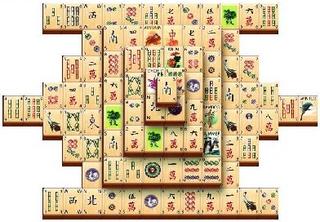Mahjong Tiles (cont.)
Matching Tiles in Mahjong Tiles
In five of the seven suits, you can only match tiles that are exactly identical by number and picture. You can't match tiles that have the same number only. Two tiles with 9 of Circles match, but a 9 of Circles and a 9 of Bamboo don't match.
In two special suits, Seasons and Flowers, you can match any tiles in that suit. In Seasons, you can match any of the seasons together (Spring and Winter or Summer and Fall, for example). In Flowers, you can match any of the flowers together.

Note that the tiles you get in a game will depend on the number of tiles in the layout, so not all layouts will include Seasons and Flowers.
Notes and tips:Sometimes a tile will have more than one free match. In this case, try to remove tiles that free up other tiles in preference to stand-alone tiles
Note: Next I will post some simple strategies to play Mahjong Tiles.



















